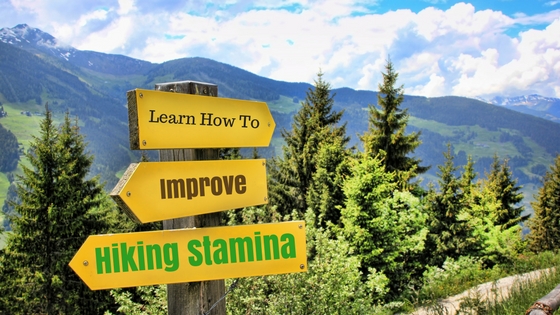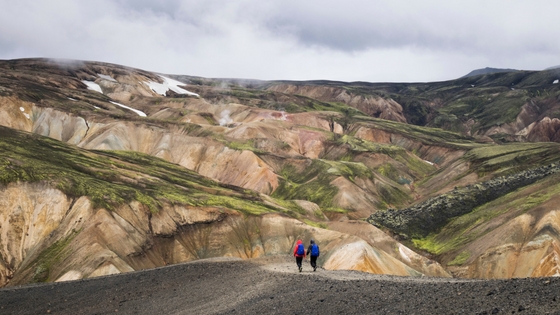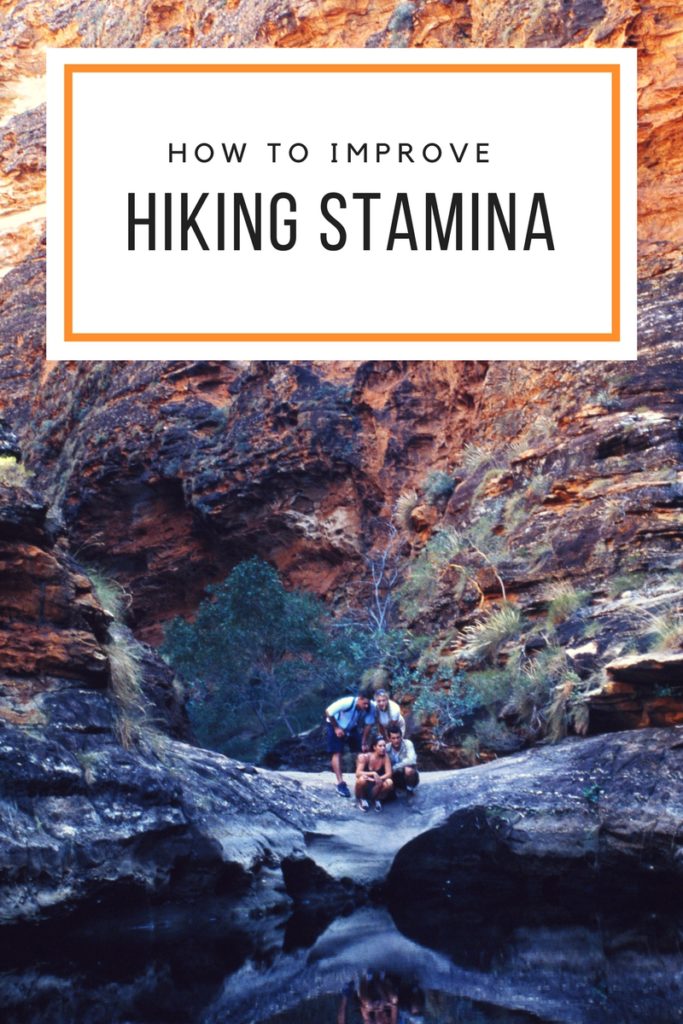
Hiking is an excellent exercise and a lot of fun if you’ve got some stamina. It also lets you spend some time close to nature and get away from the noise and busy routine of everyday life. If you are looking to lose some weight or get back in shape, hiking is a great way to achieve this.
However, if you genuinely want to learn how to improve hiking stamina, you’ll need to put some thought, effort, and practice into it. You can learn how to do your hiking session like a pro. If you hike right, you will not only reap the most benefits from it but will also enjoy it immensely. Who knows, it may even become a life-long passion for you. Here are some simple tips to nudge you in the right direction. These will help you establish a solid hiking style and routine. Feel free to knock off or modify these tips depending on your preferences, taste and physical prowess.
How to Improve Hiking Stamina

Pack Your Rations
It goes without saying that dehydration causes fatigue. Water will keep you hydrated while a ready supply of on-the-go foods such as dried fruits, nuts, beef jerky, or granola bars will boost up your energy. Make sure you take small sips from your water bottle every now and then, even if you are not feeling thirsty. Strenuous physical activity such as a hike leads some people to lose appetite. Still, it’s important that you eat something light and energy-rich during the hike. Some trails may have running water, but you can never be sure of the water quality. So it’s always preferable to pack your own water and food.
Know Your Stamina
We, as humans, often tend to over-estimate our strength. That may be very beneficial in some situations, but hiking is not among them. If you are going to go on a hike, know your stamina and your strength. This means that if you can barely manage a 3-mile walk, do not start a 10-mile hike. And don’t be disheartened if you can’t roll up too many miles under your belt yet.
In time, you can build up your pace and strength, and score a lot more miles. Just start with easy to moderate hikes. If you start hiking with trails which are too long or strenuous for you, you may give up hiking altogether. Before you ever start down a trail, you should know the Trail Difficulty (easy, moderate, challenging, difficult, very difficult, extreme). This is measured by miles and elevation gain. A 5-mile trail might not seem too bad but if there’s a 1650 ft elevation increase it changes a moderate hike to a difficult hike. So start it slow and build it up over time.
Time Yourself Right
If you are going on a hike, you will likely do the trail twice to get back to your starting point. So time yourself to see how long it takes you to reach each mile-marker so that you have ample space to do the loop. An important thing to consider here is your pace. Some hikers are able to cover the miles quickly; others take a more comfortable pace. You are the best judge of your pace and timing. So be sure you have plenty of time before you go hiking. Ideally, you should start just before sunrise and cover most of your distance by midday. This has the added advantage of giving you time to check any beautiful views or exotic birds along the way.
Be Mindful of the Weather
Mild summers are the best time to go hiking for most people, although some may find winter hiking equally fun. Still, the weather is an important element to consider when you start hiking. Even in pleasant summers, the morning hours will give you a great window to hike but as the day warms up, the element of enjoyment may slightly diminish. Be prepared to face this change.
Also, check out the weather forecast before you head out. You may be left stranded on the trail in case it starts raining. A tiny weather check will save you a lot of hassle.
Get the Right Shoes
Hiking shoes should be lightweight and water resistant. They should be roomy around the toes and snug around the rest of your foot. If your shoes are too tight it can put unnecessary pressure on your feet and toenails that can lead to swelling. If your shoes are too big or aren’t laced tightly it increases the chances of forming blisters.
Specialized hiking shoes are a great choice if you are going to head out on a hiking trail. These shoes have a unique design which adds more grip to your feet and absorbs the shock. Both these features are immensely valuable on uneven terrain. The added grip is especially helpful when you are climbing while the shock-absorbing feature helps you put up with the terrain without getting tired too soon. If you are trying your hand at a trail that has rough rocks, it is advisable that you make appropriate arrangements to shield your ankles. In regular shoes, even a slight twist of the feet may hurt your ankles. You can go with shoes that go all the way to your ankles and beyond. These will add an extra layer of protection.
Know How To Seek Help
Knowing how to seek help if you need it can provide peace of mind. Some people waste energy worrying about getting lost. Eliminate the worry by being prepared. Have a map, compass, survival rations, a timeframe, and learn how to signal for help. If you are in a clear space without tree-cover hampering your view, you can use a mirror to send a flash signal for help. Remember the rule of threes. Three mirror flashes, three whistles, three items or anything in a three pattern indicates that you need help. Park rangers and many professional hikers can recognize this signal. Use this if you are in need of assistance on the trail. Tell others, such as friends or family members, where you are headed. Share such details as the time you leave, the trail you will take and the time you are expected to return. This is vitally important in case some unfortunate incident happens to you on the trail. Your loved ones will know if you are late and will know where to look for you.
Enjoy Yourself
One of the most effective ways to boost your stamina is to enjoy what you are doing. When your brain is interested and engaged, it tones-down feeling of exhaustion and produces endorphins which increase energy. So take breaks along the trail to delight-in mother nature and charm the wildlife. Also, be polite to other hikers you meet, greet and exchange a few words of encouragement. As with virtually every setting of human society, hiking trails have their norm of etiquette. In general, the person who is climbing has the right of way. And it’s considered good manners to step aside for such a person if the trail is narrow.
Written by Ryan Harris who is an Outdoor Man. He likes outdoor activities and hunting at night. Ryan built the blog Clever Hunters to help readers with similar interests, teach them night hunting tips, and introduce related products. Besides that, He also shares His experience of outdoor activities. Just visit His blog and see the useful things that He brings.
Thanks for visiting the Preppers Survive website. If you enjoyed this article, please share it on your favorite social media and vote for this site here.




Leave a Reply